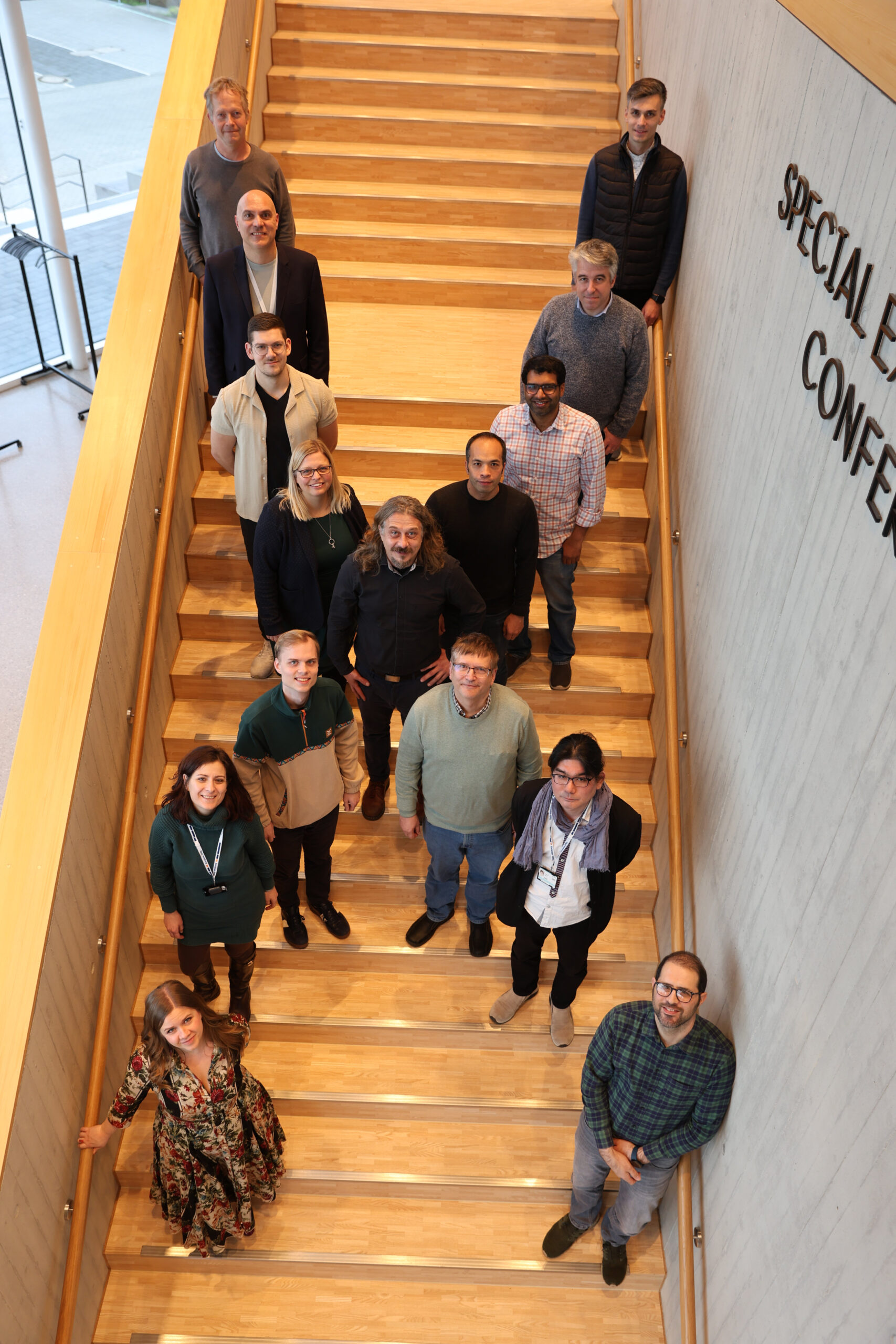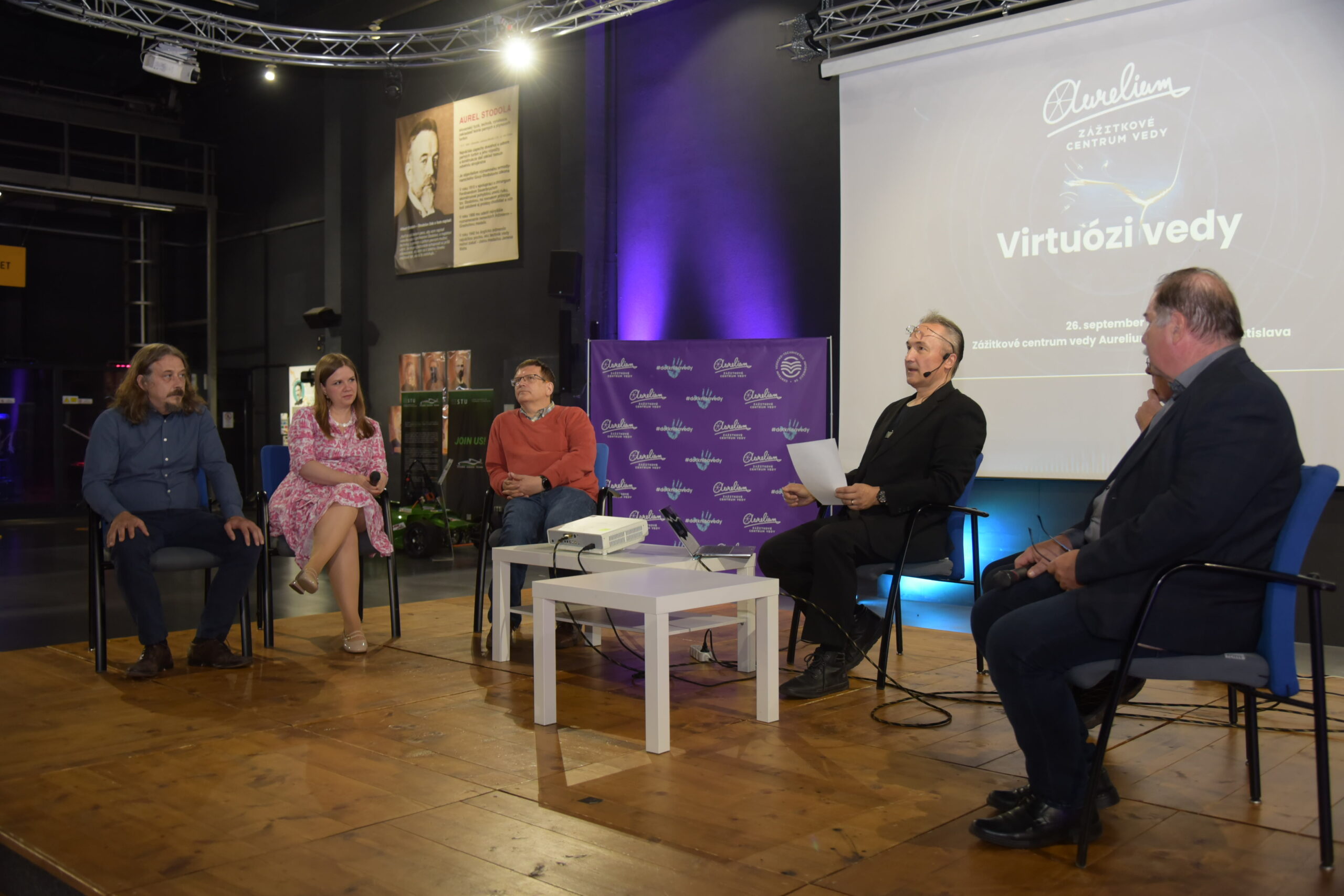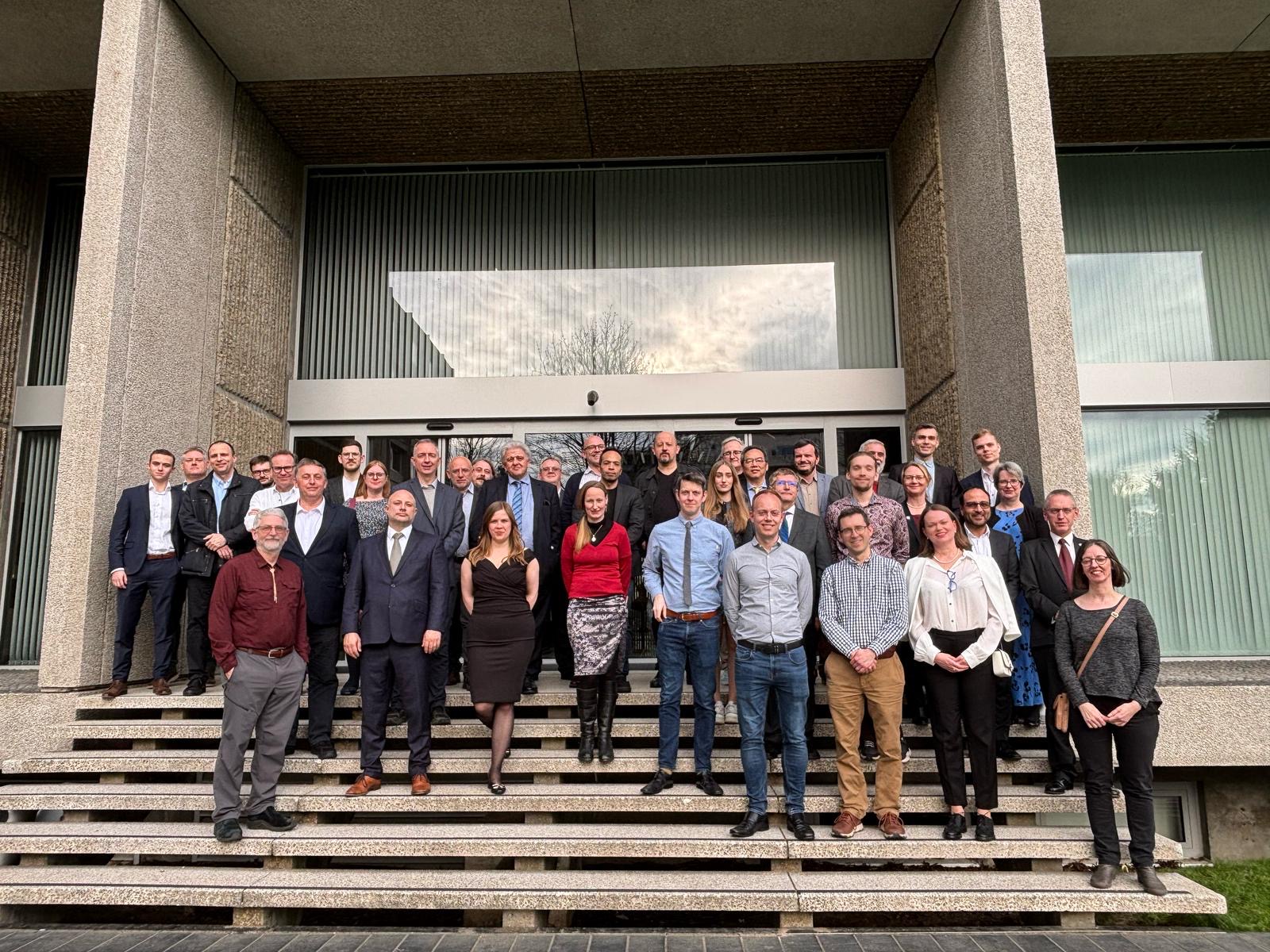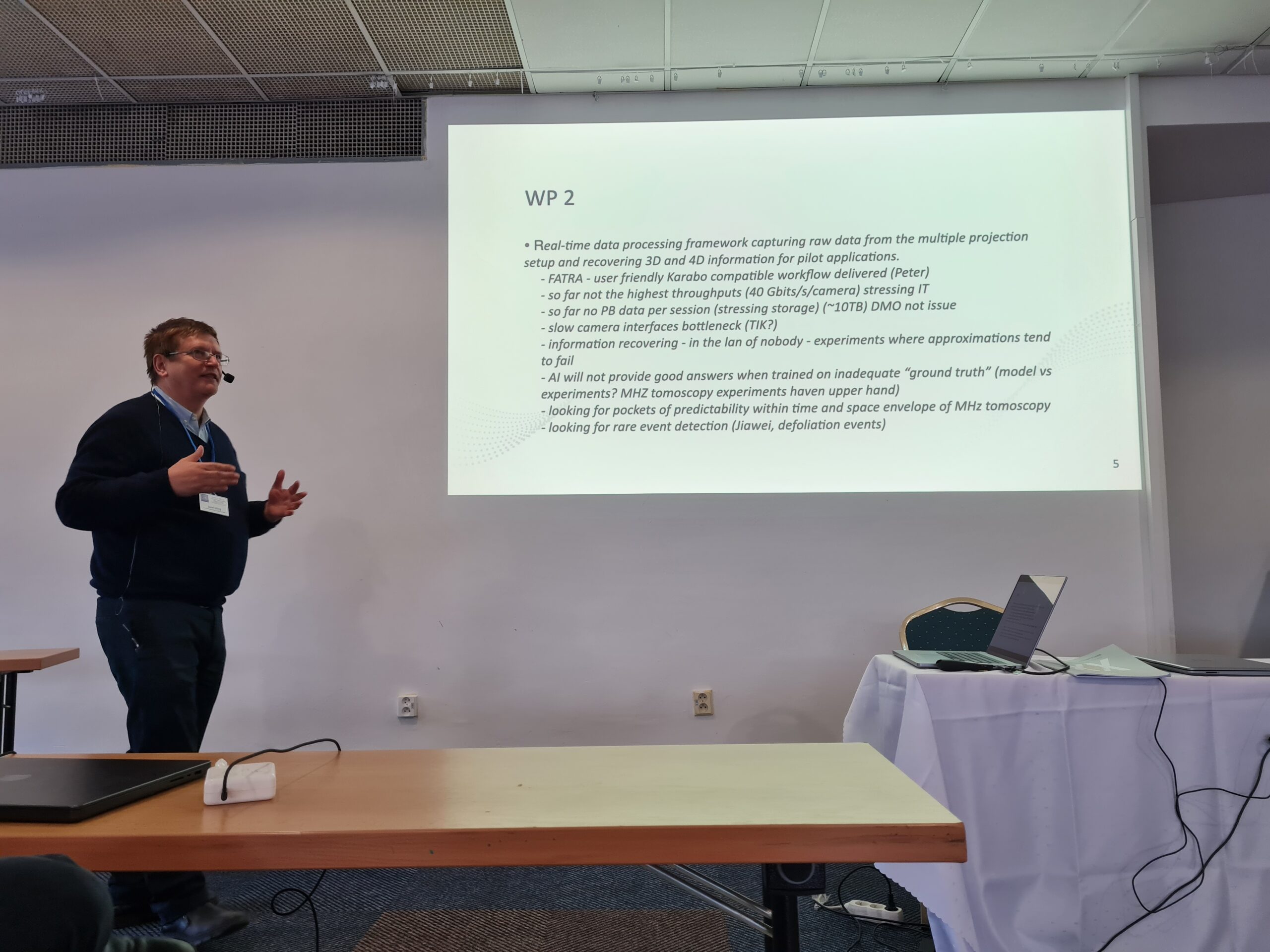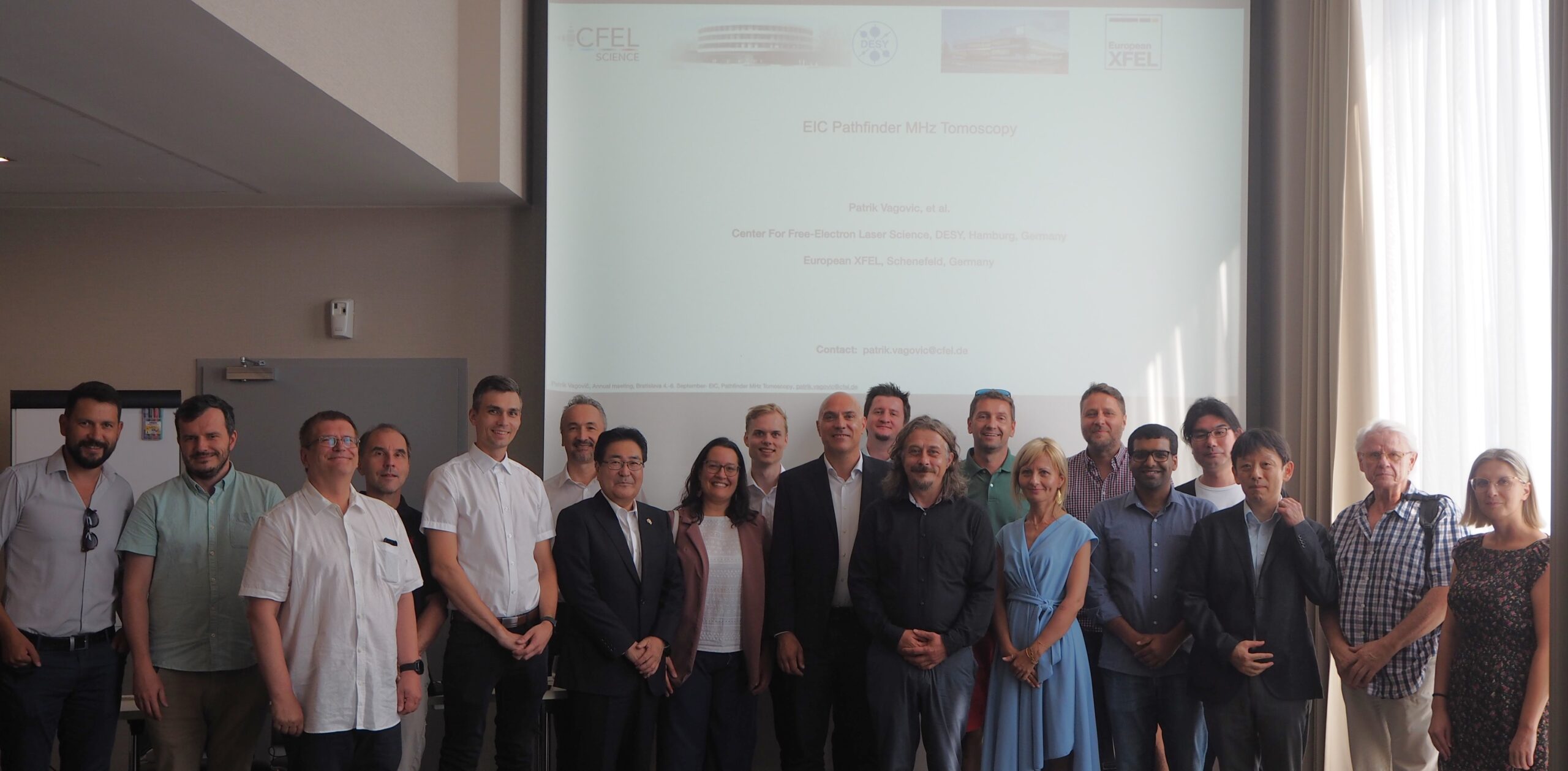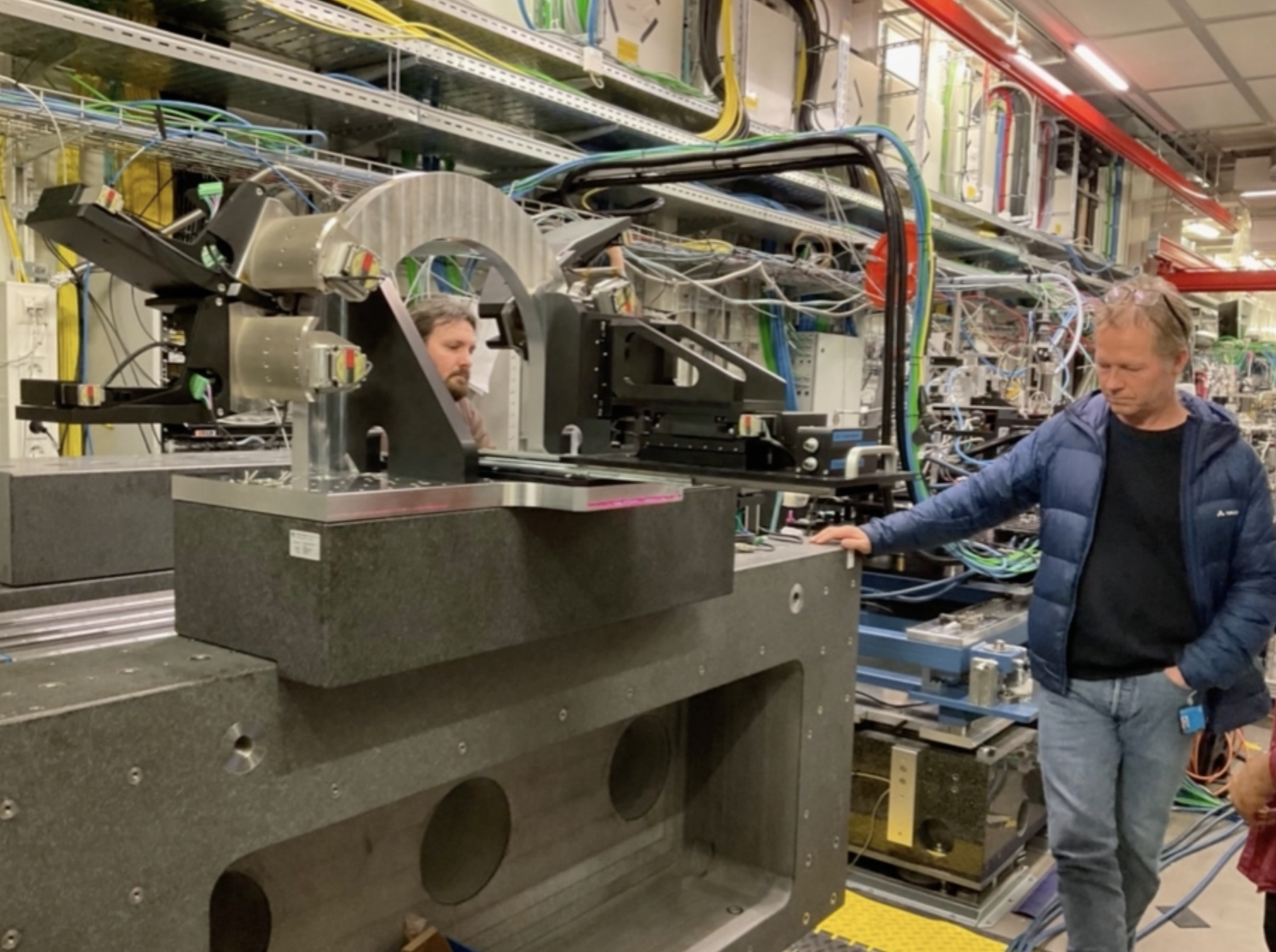Latest news
-
3rd Annual Meeting of HE EIC MHz Tomoscopy project
The third and final Annual Meeting of the HE EIC MHz Tomoscopy Project was held at EuXFEL in Hamburg, Germany, from November 4–5. The event highlighted a wide range of new possibilities enabled by the activation of the device, with applications spanning advanced materials science, biology, and high-tech industrial sectors such as aerospace and 2D…
-
Science virtuosos in Aurelium during Science Night 2025
Bratislava, September 26, 2025 — As part of this year’s Science Night, the Aurelium Science Experience Center in Bratislava hosted an event titled Virtuosos of Science. The program spotlighted researchers utilizing the European XFEL research infrastructure and featured presentations by Slovak scientists actively engaged in EuXFEL projects.
-
Slovak – British collaboration in ultrafast X-ray imaging
On March 19, 2025, researchers from Slovakia and the UK specializing in ultra-fast X-ray imaging met in London to exchange ideas, discuss new technologies, and strengthen collaboration. The event began with opening remarks from Dr. Nicole Elleuche, Executive Director of European XFEL, followed by discussions on recent advancements and applications of ultrafast X-ray imaging. Dr.…
-
SFEL 2024
Pavol Jozef Šafárik University in Košice under the auspices of Ministry of Education, Research Development and Youth of the Slovak Republic, Ministry of Economy of the Slovak Republic and European X-Ray Free-Electron Laser Facility GmbH in Hamburg organized School of XFEL and Synchrotron Radiation Users 2024 that took place in Liptovský Ján (Slovakia) from November 14th, 2024, to November 18th, 2024.Within the…
-
2nd Annual Meeting of HE EIC MHz Tomoscopy project
From September 4-6, the 2nd Annual Meeting of the HE EIC MHz Tomoscopy Project was held in Bratislava, Slovakia. The opening session on September 4th was attended by representatives from the Italian and Japanese embassies in Slovakia, the State Secretary of the Slovak Ministry of Education, the Director of the Visegrad Fund, and partners from…
-
Installation of MHz-Tomoscopy setup at EuXFEL
Installation of MHz-Tomoscopy setup at EuXFEL – 11.4.2024

This project has received funding from the European Union’s Horizon Europe research and innovation programme under grant agreement No. 101046448
© 2025 MHz – Tomoscopy. All Rights Reserved.

